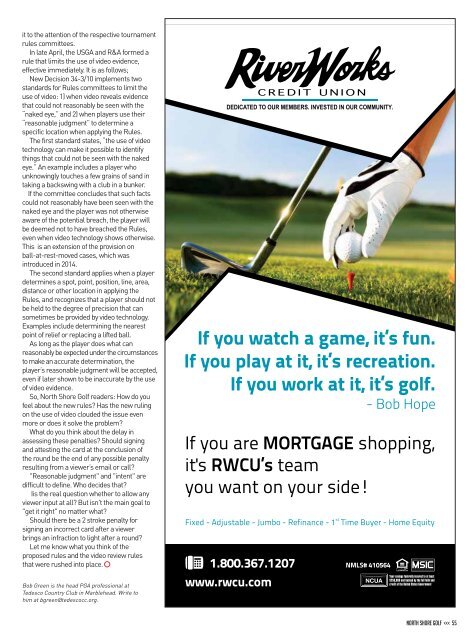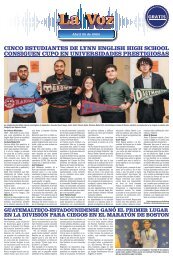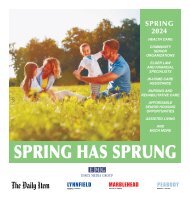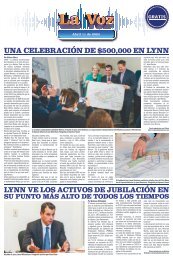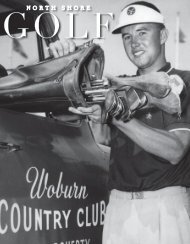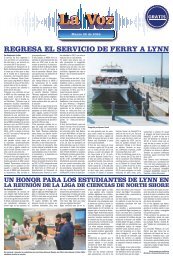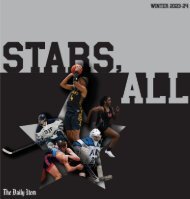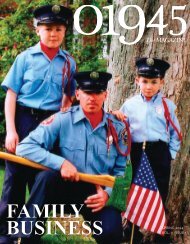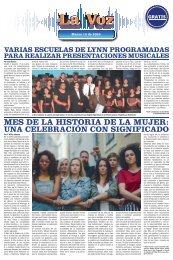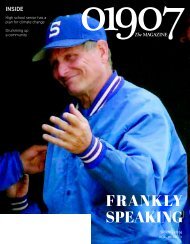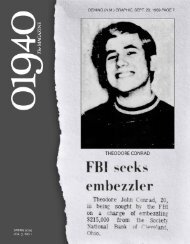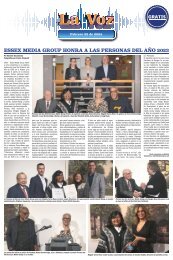GolfMagazine
You also want an ePaper? Increase the reach of your titles
YUMPU automatically turns print PDFs into web optimized ePapers that Google loves.
it to the attention of the respective tournament<br />
rules committees.<br />
In late April, the USGA and R&A formed a<br />
rule that limits the use of video evidence,<br />
effective immediately. It is as follows;<br />
New Decision 34-3/10 implements two<br />
standards for Rules committees to limit the<br />
use of video: 1) when video reveals evidence<br />
that could not reasonably be seen with the<br />
“naked eye,” and 2) when players use their<br />
“reasonable judgment” to determine a<br />
specific location when applying the Rules.<br />
The first standard states, “the use of video<br />
technology can make it possible to identify<br />
things that could not be seen with the naked<br />
eye.” An example includes a player who<br />
unknowingly touches a few grains of sand in<br />
taking a backswing with a club in a bunker.<br />
If the committee concludes that such facts<br />
could not reasonably have been seen with the<br />
naked eye and the player was not otherwise<br />
aware of the potential breach, the player will<br />
be deemed not to have breached the Rules,<br />
even when video technology shows otherwise.<br />
This is an extension of the provision on<br />
ball-at-rest-moved cases, which was<br />
introduced in 2014.<br />
The second standard applies when a player<br />
determines a spot, point, position, line, area,<br />
distance or other location in applying the<br />
Rules, and recognizes that a player should not<br />
be held to the degree of precision that can<br />
sometimes be provided by video technology.<br />
Examples include determining the nearest<br />
point of relief or replacing a lifted ball.<br />
As long as the player does what can<br />
reasonablybe expected under the circumstances<br />
to make an accurate determination, the<br />
player’s reasonable judgment will be accepted,<br />
even if later shown to be inaccurate by the use<br />
of video evidence.<br />
So, North Shore Golf readers: How do you<br />
feel about the new rules? Has the new ruling<br />
on the use of video clouded the issue even<br />
more or does it solve the problem?<br />
What do you think about the delay in<br />
assessing these penalties? Should signing<br />
and attesting the card at the conclusion of<br />
the round be the end of any possible penalty<br />
resulting from a viewer’s email or call?<br />
"Reasonable judgment" and "intent" are<br />
difficult to define. Who decides that?<br />
Iis the real question whether to allow any<br />
viewer input at all? But isn't the main goal to<br />
"get it right" no matter what?<br />
Should there be a 2 stroke penalty for<br />
signing an incorrect card after a viewer<br />
brings an infraction to light after a round?<br />
Let me know what you think of the<br />
proposed rules and the video review rules<br />
that were rushed into place. l<br />
Bob Green is the head PGA professional at<br />
Tedesco Country Club in Marblehead. Write to<br />
him at bgreen@tedescocc.org.<br />
<br />
<br />
<br />
<br />
<br />
<br />
<br />
<br />
<br />
<br />
<br />
<br />
<br />
<br />
<br />
NORTH SHORE GOLF


